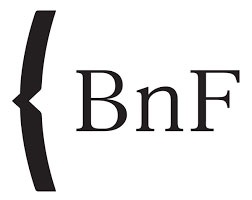Art et Société
-
Réalisé par Marie Frapin • Écrit par Stéphane Druais, Marie Frapin, François Le Bayon, Chantal Soyer
-
France • 1997 • 26 minutes • Couleur
- Réalisation :
Marie Frapin - Écriture :
Marie Frapin, Stéphane Druais, François Le Bayon, Chantal Soyer
- Production (structure) :
Lieurac Productions - Coproduction :
Grand Canal - Diffuseur :
La Cinquième - Participation :
CNC, DAP - Délégation aux Arts Plastiques, DDF - Délégation au Développement et aux Formations - Ayant droit :
Lieurac Productions
- N° ISAN :
non renseigné
Résumé
La radio égrène son chapelet de bonnes nouvelles : corruption, spéculation, chômage... À l'instar de Grosz qui, en 1920, épinglait dans ses œuvres les profiteurs d'un système qui "accorde aux chômeurs jour après jour de quoi mourir", l'artiste doit-il seulement dresser un constat de l'état du monde ? Ou doit-il s'engager davantage en intervenant directement sur la réalité sociale ? Depuis les années 70, Hans Haacke a fait des rapports troubles entre l'art, la politique et l'argent, son sujet favori. Dans "Shapolski", documentation photographique qui analyse le fonctionnement d'opérations immobilières, il dénonce la main mise du groupe Shapolski sur l'habitat pauvre de Manhattan. Mais l'exposition est annulée par le musée Guggenheim, institution financée par la classe sociale qu'il dénonce. Wodiczko, lui, invente des artifices : "Le Bâton de l'immigré" (1992), sorte de perche avec un écran vidéo à son extrémité, dévoile au passant l'expérience de l'immigré. (Annick Spay)
The radio recites its list of good news : corruption, speculation, unemployment... Like Grosz who, in 1920, made fun in his work of those who took advantage of a system that "grants to the unemployed day after day what they need to die", should the artist simply make an observation on the state of the world ? Or should he get more involved by intervening directly on social reality ? Since the 1970s, Hans Haacke has made troubling connections between art, politics and money, his favourite subject. In "Shapolski", photographic documentation that analyses the running of real estate businesses, he denounces the taking over by the Shapolski group of poor housing in Manhattan. But the exhibition was cancelled by the Guggenheim museum, an institution that is financed by the social class that he was denouncing. Wodiczko invents artifices : "Le Bâton de l'immigré" (1992), a sort of long stick with a video screen at the end of it, reveals to the passer-by the experience of the immigrant. (Annick Spay)
Collection
Comment avoir accès au film ?
-
Édition DVD
- Il n'existe pas d'édition DVD à notre connaissance
-
Accès VOD
- Il n'existe pas d'accès en VOD à notre connaissance
- Diffusion non commerciale / Consultation
